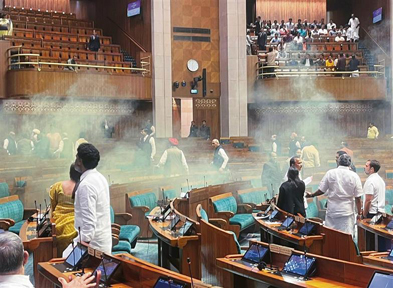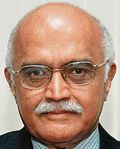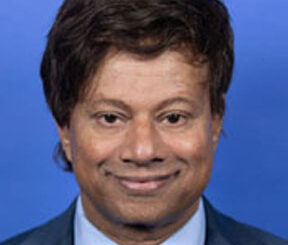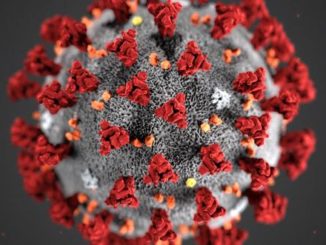
This time, the delinquents managed to reach the virtual heart of Parliament while the proceedings were going on in the Lok Sabha.
“Officially, the new building’s five-tier security is foolproof: Visitors’ entry is through the ‘reception’ near the Rail Bhavan. Also, verification of credentials is done at the security post on Raisina Road before they reach the ‘reception’. There is a stipulation that before entering, all electronic gadgets, bags and wallets must be deposited in a designated cloak room. The visitors are screened at the reception, their passes are verified again, and they are checked again near the entry gate of the new building. The visitors are then grouped into those going to the Lok Sabha or the Rajya Sabha and checked again at two gates. Before entering the respective visitors’ galleries, they are checked once more.”

There is an important difference between the Pakistan-sponsored terror attack on Parliament on December 13, 2001, and the intrusion into the new Parliament building by miscreants on December 13, 2023. This time, the delinquents managed to reach the virtual heart of Parliament while the proceedings were going on in the Lok Sabha. That makes the incident much more serious than the one in 2001, when terrorists could not enter the building. In 2001, the terrorists were fortuitously intercepted by an alert security officer in charge of the escort vehicle of the Vice-President, whereas on Wednesday the security staff was blissfully unaware of the intruders’ presence, putting the onus of resistance on the MPs. Remarkably, the security personnel were not spotted when the miscreants started spraying gas from canisters hidden in their shoes.
Also, the intruders seemed to have taken advantage of the layout of the complex, jumping into the Lok Sabha hall quite easily from the visitors’ gallery. The distance between the gallery and the hall seems to have been reduced in the new building, going by what some MPs said immediately after the incident. Another important point revealed by them was that the new system of entry into the building through a single access point as against three or four entry points in the old building seemed to have burdened the security apparatus.
That perhaps might have been the reason why the miscreants could hide the canisters in their shoes despite the much-touted five-tier security system in the new building. We can only imagine the horror that could have happened had they carried grenades instead of gas canisters. This incident was somewhat like what happened at Raj Ghat on October 2, 1986. Several VIPs, including the President, the Prime Minister and MPs had been saved, not by their security staff, but only because Karamjit Singh — an assailant who had hidden himself in tree branches despite a prior intelligence alert — possessed only a primitive muzzle-loading gun. Like in 1986, we cannot depend on providence for our VIP security.
In 2001, according to the Supreme Court’s records, a white Ambassador car with a red beacon on top entered the Parliament complex around 11:30 am and arrived at the point where the convoy of the Vice-President was waiting near Gate No. 11. Inside the car were persons dressed in some sort of uniform. Since the escort vehicle was blocking its way, the suspect car turned away. This made the ASI in charge of the Vice-President’s escort vehicle suspicious and he told the car driver to stop.
Instead, the driver reversed the vehicle and tried to move away. In the process, it hit the Vice-President’s car. The ASI and the Vice-President’s driver ran towards the suspect car and caught hold of the driver by the collar. Five Pakistani terrorists then got out of the car and started laying wires and detonators.
Seeing this, the ASI fired a shot, hitting the leg of one of the terrorists. The terrorist fired back, injuring the ASI in his right thigh. This exchange of fire alerted the police and special forces in the Parliament complex and a gunbattle started. The terrorists went from gate to gate within the complex, firing at the security men, and the latter returned fire.
Then BJP MP Ram Naik had told the media that there were three gates: Gate No. 12, through which the Vice-President — who is also the Rajya Sabha chairman — entered; Gate No. 1, from where the MPs usually came in; and Gate No. 5, from where the Prime Minister entered. He said the terrorists fired at all these three gates but could not enter the building as CRPF constable Kamlesh Kumari Yadav had closed the main entrance. According to reports, she died after being hit by 11 bullets.
None of this happened on Wednesday. The entry of the offenders was smooth. After the incident, several complaints were made by Opposition members: the Joint Parliamentary Committee on Security has not been constituted during the 17th Lok Sabha; there is ‘political bias’ in issuing visitor passes; there is increased presence of private security guards, who have allegedly replaced official parliamentary security guards and Central police forces in the new building.
Officially, the new building’s five-tier security is foolproof: Visitors’ entry is through the ‘reception’ near the Rail Bhavan. Also, verification of credentials is done at the security post on Raisina Road before they reach the ‘reception’. There is a stipulation that before entering, all electronic gadgets, bags and wallets must be deposited in a designated cloak room. The visitors are screened at the reception, their passes are verified again, and they are checked again near the entry gate of the new building. The visitors are then grouped into those going to the Lok Sabha or the Rajya Sabha and checked again at two gates. Before entering the respective visitors’ galleries, they are checked once more.
None of this prevented the entry of these determined intruders. This audacious security breach, which comes weeks after Sikhs for Justice founder Gurpatwant Singh Pannun’s threat to Air India, speaks very poorly of the overall security of our sensitive institutions. Did our security managers assume that only Air India needed to be protected after that threat?
Any student of terrorism history would know that terrorists often change tactics to cause confusion. After the 26/11 attacks in 2008, we were getting ready to face fidayeen strikes while the terrorists reverted to improvised explosive devices and killed 21 people at three places in Mumbai in July 2011.
(The author is a former Special Secretary, Cabinet Secretariat, government of India)





Be the first to comment